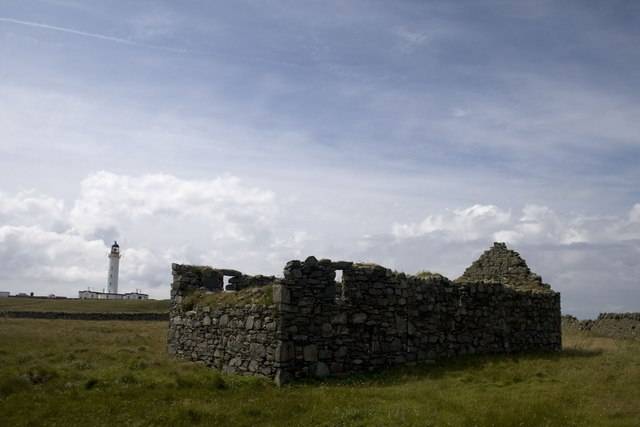Religion and the Lordship of the Isles
© Copyright Becky Williamson
Religion and the Lordship of the Isles
Bha tri creideamhan ann an Tighearnas nan Eilean. B‟ iad seo a‟ chreideamh Chaitligeach Èireannach, a‟ chreideamh Lochlannach agus Cruithnichis-Ceilteach. Ged gu robh Pàganachd ann, cha robh leathachas. Bha comhairle nan eilean dealaichte bho chreideamh. Bha an t-Eilean Ì Chaluim Chille ann agus rinn a chuid a bu mhotha de cheannardan an Tighearnais oidhirp airson a dhearbhadh an obair ag Calum-Chille. Bha ùghdarras aig na manaich anns a‟ chomhairle ach bha iad sin mar uachdaran. Bha ceangal mòr eadar an Tighearnas agus an Roinn Eòrpa . Nuair a sgair Iain, Righ nan Eilean, ‟s Amie Nic Ruaraidh bho chèlie fhuair iad cead bhon Ròimh ann an 1350 airson neònitheachadh. Rinneadh sin airson barrachd ùghdarras fhaighinn leis a‟ phòsadh aig Mairead Stiùbhart, nighean oighre an Riaghaltas Alba. Bha an Tighearna daonnan a‟ togail agus a‟ cur taic ri eaglaisean agus manachainnean. Chithear eisimpleirean de seo ann an Sadall ann an Cinn Tìre, an abaid, agus nam priòreachdan ann an Àird Chattain ann am Muile agus ann an Òrasaigh, aig taobh an iar de Na Roinne Ìlich. Bha iad cuideachd a‟ cruthachadh sàbhlachan creidmheach le òr „s airgead agus gu h-àraidh air clachan sònraichte. ‟S e a‟ chlach aig Cille Daltain tè den fheadhainn as fheàrr de chroisean bhon Sgoil Ì Chaluim Chille.
There were three religions within the bounds of the Lordship of the Isles; Irish Catholicism, the religion of the Vikings and the religion of the Pictish-Celts. Though there was Paganism there was no discrimination. However, the Council and the way in which the Lordship operated were separate from religion. Although the monks of Iona held some power within the Council of the Isles, they were mainly there as land holders. When it came to personal issues, there was a strong connection between the Lordship and the main church of Europe. The divorce of Amie MacRuari is an example of this, where permission was received directly from Rome. The divorce was intended to gain greater sway in Scotland for the Lordship, by allowing John, Lord of the Isles, to marry Margaret Stewart, daughter of the heir to the Scottish throne. The Lordship continued to build and give donations to churches and monasteries, and there are many fine examples of buildings supported by the Lordship still visible today. These include the abbey at Saddal in Kintyre, the priory at Aird Chattain in Mull and the chapel at Orsay, off the west coast of the Rinns. They gathered religious artifacts of silver and gold, as well as sacred stones and crosses. At Kildalton is one of the finest examples of Celtic crosses from the Iona school.
Pictured is the Chapel at Orsay, off the coast of the Rinns.
More information on visiting the area can be found here.
